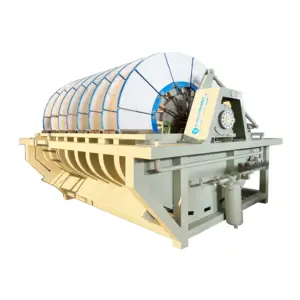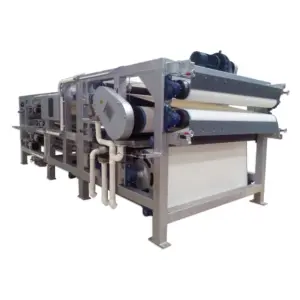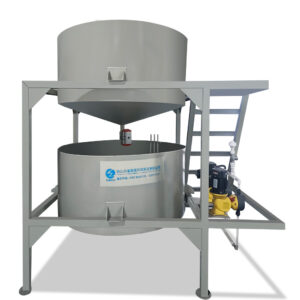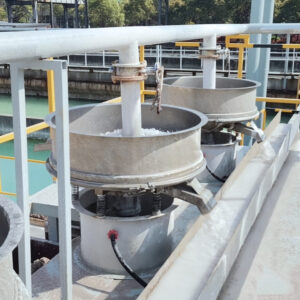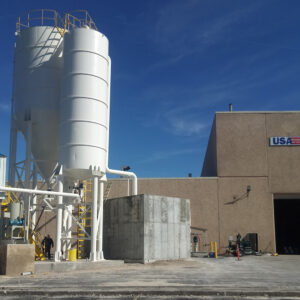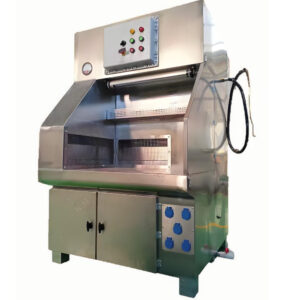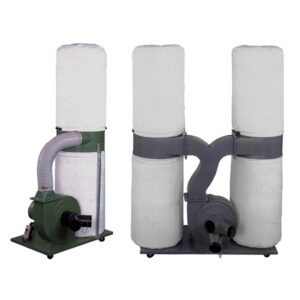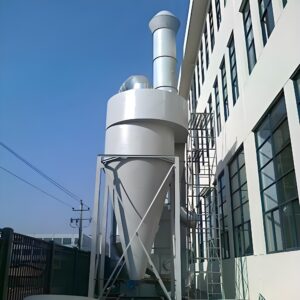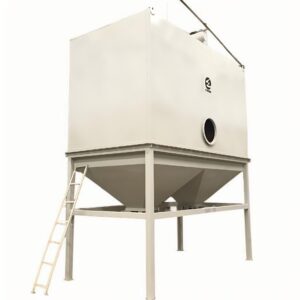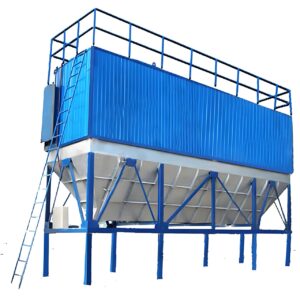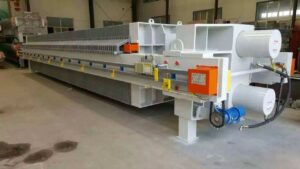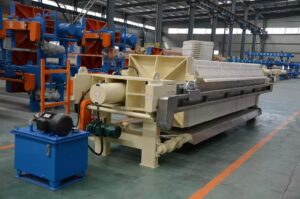Downdraft tables are essential tools in many industrial settings, providing efficient fume and dust extraction to maintain a clean and safe working environment. However, like any piece of equipment, their longevity depends on proper care and maintenance. In this comprehensive guide, we'll explore expert strategies to extend the lifespan of your downdraft table, ensuring it continues to perform optimally for years to come.
Maintaining a downdraft table isn't just about preserving an investment; it's about safeguarding the health of workers and maintaining productivity. From regular cleaning routines to advanced filter maintenance techniques, we'll cover everything you need to know to keep your downdraft table in peak condition. Whether you're a seasoned professional or new to industrial ventilation systems, this article will provide valuable insights to help you maximize the lifespan of your equipment.
As we delve into the intricacies of downdraft table maintenance, we'll explore the critical components that require attention, the frequency of maintenance tasks, and the best practices recommended by industry experts. By implementing these strategies, you can not only extend the life of your downdraft table but also improve its efficiency and reduce long-term operational costs.
A well-maintained downdraft table can last up to 20 years or more, significantly outlasting poorly maintained units that may need replacement in as little as 5-7 years.
This claim underscores the importance of proper care and highlights the potential longevity of these essential pieces of equipment. Let's explore the key aspects of downdraft table maintenance that contribute to this extended lifespan.
How Often Should You Clean Your Downdraft Table?
Regular cleaning is the cornerstone of downdraft table maintenance. A clean table not only performs better but also lasts longer. But how frequently should you be cleaning your downdraft table to achieve optimal results?
The frequency of cleaning depends on several factors, including the type of materials you work with and the intensity of use. However, a general rule of thumb is to perform basic cleaning daily and more thorough cleaning weekly.
Implementing a consistent cleaning schedule is crucial for maintaining the efficiency and longevity of your downdraft table. Regular cleaning prevents the buildup of debris that can clog filters and reduce suction power, ultimately leading to premature wear and tear on the system.
Daily cleaning of the work surface and weekly deep cleaning of the entire system can extend the life of your downdraft table by up to 30%.
| Cleaning Task | Frequency | Benefits |
|---|---|---|
| Surface wipe-down | Daily | Prevents debris accumulation |
| Filter inspection | Weekly | Ensures optimal airflow |
| Deep cleaning | Monthly | Maintains overall performance |
To conclude this section, remember that consistent cleaning is not just about maintaining appearances; it's a critical factor in extending the lifespan of your downdraft table. By incorporating these cleaning practices into your routine, you'll ensure that your equipment continues to perform at its best for years to come.
What Are the Key Components to Focus on for Maintenance?
When it comes to extending the lifespan of your downdraft table, knowing which components require the most attention is crucial. By focusing your maintenance efforts on these key areas, you can significantly improve the longevity and performance of your equipment.
The primary components that demand regular maintenance include the filters, the work surface, the fan and motor assembly, and the dust collection system. Each of these plays a vital role in the overall function of the downdraft table and requires specific care to ensure optimal performance.
Understanding the importance of each component and its maintenance needs is essential for developing an effective care routine. For instance, filters are the first line of defense against contaminants and require frequent attention, while the motor may need less frequent but equally important maintenance.
Regular maintenance of key components can reduce the risk of unexpected breakdowns by up to 70% and extend the overall lifespan of the downdraft table.
| Component | Maintenance Frequency | Impact on Lifespan |
|---|---|---|
| Filters | Weekly to Monthly | High |
| Work Surface | Daily | Medium |
| Fan and Motor | Quarterly | High |
| Dust Collection | Monthly | Medium |
In conclusion, by prioritizing the maintenance of these key components, you're not just performing routine upkeep; you're actively investing in the longevity of your downdraft table. Regular attention to these areas will ensure that your equipment continues to operate efficiently and effectively for years to come.
How Can Filter Maintenance Extend Your Downdraft Table's Life?
Filter maintenance is perhaps the most critical aspect of extending your downdraft table's lifespan. The filters are the heart of the system, responsible for capturing dust and fumes, and keeping them from recirculating into the work environment. But how exactly does proper filter care contribute to the longevity of your equipment?
Regularly maintained filters ensure optimal airflow, which reduces strain on the motor and other components. This, in turn, prevents overheating and premature wear. Additionally, clean filters are more efficient at capturing particles, which means less contamination reaches other parts of the system.
To maximize the benefits of filter maintenance, it's essential to understand the different types of filters your downdraft table may use and their specific care requirements. Some systems use disposable filters that need regular replacement, while others feature washable or self-cleaning filters that require different maintenance approaches.
Proper filter maintenance can extend the life of your downdraft table by up to 50% and improve its overall efficiency by 30%.
| Filter Type | Maintenance Method | Frequency |
|---|---|---|
| Disposable | Replace | Every 3-6 months |
| Washable | Clean | Monthly |
| Self-cleaning | Inspect and assist | Weekly |
In conclusion, filter maintenance is not just about keeping the air clean; it's a fundamental practice in preserving the integrity and extending the lifespan of your entire downdraft table system. By prioritizing filter care, you're ensuring that your equipment operates at peak performance for years to come.
What Role Does Proper Ventilation Play in Longevity?
Proper ventilation is often overlooked when considering the lifespan of a downdraft table, but it plays a crucial role in maintaining the system's efficiency and longevity. How does adequate ventilation contribute to the overall health of your equipment?
Effective ventilation ensures that the downdraft table can efficiently remove contaminants from the work area. This not only protects workers but also reduces the strain on the filtration system and other components. Poor ventilation can lead to overworking of the motor and fans, potentially shortening their lifespan.
Understanding the airflow requirements of your specific downdraft table model is essential for optimizing its performance and longevity. This includes considering factors such as the size of your workspace, the types of materials being processed, and the intensity of use.
Optimizing ventilation can reduce energy consumption by up to 20% and extend the operational life of motor and fan components by 25%.
| Ventilation Aspect | Impact on Longevity | Optimization Method |
|---|---|---|
| Airflow Rate | High | Adjust based on usage |
| Duct Design | Medium | Minimize bends and restrictions |
| Room Air Balance | Medium | Ensure proper makeup air |
To conclude, proper ventilation is not just about maintaining air quality; it's a key factor in preserving the integrity of your downdraft table. By ensuring optimal airflow and ventilation, you're taking a significant step towards extending the lifespan of your equipment and improving its overall performance.
How Does Regular Inspection Contribute to Longevity?
Regular inspection is a cornerstone of preventive maintenance and plays a vital role in extending the lifespan of your downdraft table. But what exactly should you be looking for during these inspections, and how do they contribute to the longevity of your equipment?
Routine inspections allow you to identify potential issues before they escalate into major problems. This proactive approach can prevent unexpected breakdowns, reduce repair costs, and minimize downtime. During inspections, you should check for signs of wear, unusual noises, vibrations, or any changes in performance.
Implementing a structured inspection schedule ensures that no aspect of your downdraft table is overlooked. This includes checking the integrity of seals, the condition of belts and bearings, and the overall structural integrity of the unit. Regular inspections also provide an opportunity to clean areas that might be missed during routine cleaning.
Implementing a comprehensive inspection program can reduce unexpected downtimes by up to 60% and extend the overall lifespan of the downdraft table by 15-20%.
| Inspection Area | Frequency | Key Check Points |
|---|---|---|
| Motor and Fan | Monthly | Noise, vibration, heat |
| Filters | Weekly | Clogging, damage |
| Work Surface | Daily | Cracks, blockages |
| Ductwork | Quarterly | Leaks, obstructions |
In conclusion, regular inspections are not just a maintenance task; they're an investment in the longevity and reliability of your downdraft table. By consistently performing thorough checks, you're ensuring that your equipment remains in optimal condition, ready to perform efficiently whenever needed.
What Impact Does Workload Management Have on Equipment Lifespan?
Workload management is an often-overlooked aspect of extending the lifespan of a downdraft table. But how does the way you use your equipment affect its longevity, and what strategies can you employ to optimize its performance through smart workload management?
Balancing the workload on your downdraft table is crucial for preventing overuse and the associated wear and tear. This includes understanding the capacity of your system and avoiding prolonged periods of operation at maximum capacity. Proper workload management also involves scheduling regular breaks to allow the system to cool down and recover.
Implementing effective workload strategies not only extends the life of your equipment but also improves its efficiency and reduces energy consumption. This might involve scheduling high-intensity tasks during cooler parts of the day or alternating between heavy and light workloads to give the system regular breaks.
Effective workload management can increase the lifespan of motor and fan components by up to 40% and reduce overall energy consumption by 15-20%.
| Workload Aspect | Impact on Longevity | Management Strategy |
|---|---|---|
| Operating Hours | High | Schedule regular breaks |
| Intensity of Use | Medium | Alternate heavy and light tasks |
| Peak Load Times | Medium | Distribute high-intensity work |
To conclude, thoughtful workload management is not just about maximizing productivity; it's a key strategy in preserving the longevity of your downdraft table. By implementing smart usage practices, you're ensuring that your equipment remains reliable and efficient for years to come.
How Can Upgrading Components Extend Your Downdraft Table's Life?
While regular maintenance is crucial, sometimes upgrading components can significantly extend the life of your downdraft table. But how do you know when it's time to upgrade, and which components offer the most benefit in terms of longevity?
Upgrading key components can breathe new life into older downdraft tables, improving their performance and extending their useful lifespan. This might include replacing outdated motors with more efficient models, upgrading to advanced filtration systems, or incorporating smart controls for better performance monitoring.
When considering upgrades, it's important to assess the cost-benefit ratio. Some upgrades can provide substantial improvements in efficiency and longevity, justifying the investment. Others might offer minimal benefits and may not be worth the expense. Consulting with experts or the manufacturer can help you make informed decisions about which upgrades will provide the most value for your specific situation.
Strategic component upgrades can extend the operational life of a downdraft table by up to 10 years and improve overall efficiency by 25-30%.
| Component | Upgrade Benefit | Typical Lifespan Extension |
|---|---|---|
| Motor | Improved efficiency | 5-7 years |
| Filtration System | Better air quality | 3-5 years |
| Control System | Enhanced monitoring | 4-6 years |
In conclusion, upgrading components is not just about keeping up with technology; it's a strategic approach to extending the lifespan of your downdraft table. By carefully selecting and implementing upgrades, you can significantly improve the performance and longevity of your equipment, ensuring it remains a valuable asset in your operations for years to come.
Conclusion
Extending the lifespan of your downdraft table is a multifaceted endeavor that requires attention to various aspects of maintenance, operation, and strategic upgrades. By implementing the strategies discussed in this article, from regular cleaning and filter maintenance to proper workload management and timely upgrades, you can significantly increase the longevity and efficiency of your equipment.
Remember, a well-maintained downdraft table is not just a cost-saving measure; it's an investment in workplace safety, productivity, and environmental responsibility. Regular maintenance routines, coupled with proactive inspections and smart operational practices, can help your downdraft table perform optimally for many years beyond its expected lifespan.
As you implement these strategies, consider partnering with reputable manufacturers like PORVOO, who specialize in high-quality industrial ventilation solutions. Their expertise in Downdraft table lifespan extension can provide valuable insights and solutions tailored to your specific needs.
By taking a comprehensive approach to downdraft table maintenance and longevity, you're not just preserving equipment; you're ensuring a safer, more efficient, and more productive work environment for years to come.
External Resources
Downdraft Tables – Welding Fume Extraction Systems – This resource provides detailed information on maintaining downdraft tables to extend their lifespan, including pulsing the unit 2-3 times daily, cleaning or replacing filters, and ensuring the cleanliness of the material being worked on.
What is a Downdraft Table? How Does it Work? – This article explains the maintenance requirements for downdraft tables, such as cleaning or replacing filters, inspecting the fan and motor, and keeping the work surface clean to ensure longevity and optimal performance.
What kind of maintenance do downdraft tables require? – This FAQ section outlines the regular maintenance tasks necessary for downdraft tables, including changing filters, cleaning the grated surface, emptying dust trays, and maintaining the motor/blower to extend the lifespan of the equipment.
DraftMax – Downdraft Table – This description highlights the maintenance features of the DraftMax downdraft table, such as a three-stage pre-filtration system, self-cleaning filters using compressed air, and easy front-access maintenance to extend filter life.
Downdraft Tables – Although not explicitly titled for lifespan extension, this page provides comprehensive maintenance guidelines, including filter maintenance schedules and the importance of regular pulsing to optimize filter life and overall system performance.
RoboVent: Downdraft Tables Maintenance – While not the first result, RoboVent's maintenance guide is crucial for understanding how to extend the lifespan of downdraft tables through regular filter checks, surface cleaning, and motor/blower maintenance.
- Clean Air Industries: Downdraft Table Maintenance – This resource emphasizes the importance of following the manufacturer's maintenance schedule and guidelines to ensure the longevity and optimal performance of downdraft tables.
